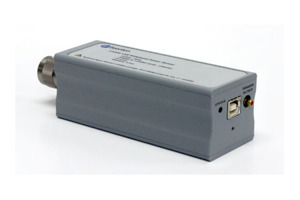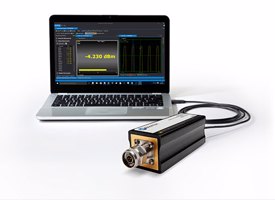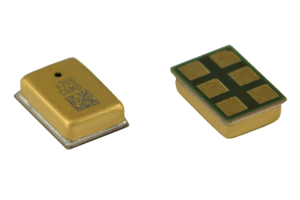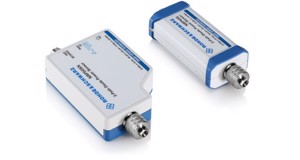Sensors
PRODUCTS AND SERVICES
The model 7037 from Bird is a precision pulse power sensor is 13.56 MHz sensor with an RF power accuracy of 0.5% maintained across its dynamic range. With its time domain analysis feature, or calibrated view of the RF pulse waveform, this power sensor enables a detailed characterization of high-power pulses and is ideally suited to calibrate RF generators that are essential to semiconductor fabrication.
Boonton once again sets the standard for fast RF power measurements with the introduction of its 55 Series Wideband USB power sensors. Built with Boonton's Real-Time Power Processing™ technology (patent pending), this new product line offers speed and accuracy never before seen in a USB form factor. The 55 Series sensors are ideal for manufacturing, design, research, and service in commercial and military applications such as telecommunications, avionics, RADAR, and medical systems. They are the instrument of choice for fast, accurate and highly reliable RF power measurements, equally suitable for product development, compliance testing, and site monitoring applications.
The RTP5000 peak USB power sensors paired with Boonton’s Real-Time Power Processing deliver 100,000 measurements per second, no gaps in signal acquisition and zero measurement latency. Combining this performance with automatic pulse measurements, CCDF and crest factor statistical analysis, multi-channel capabilities and documentation tools RTP5000 peak power sensors are the ideal instrument for fast, accurate and reliable RF power measurements.
RTP4000 true average power sensors provide 80 dB dynamic range and a frequency range down to 4 kHz. Built with Boonton's Real-Time Power ProcessingTM, these sensors deliver 100,000 measurements per second, virtually no gaps in signal acquisition, and zero measurement latency.
A high bandwidth, low-power specialized vibration sensor to improve voice call quality in noisy environments.
The R&S®NRPxxS/SN family of three-path USB and LAN diode power sensors combine accurate and uncomplicated power measurements as well as simple operation on a base unit or a laptop/PC. This family of power meters combines all these characteristics in the R&S®NRX base unit, R&S®NRPV virtual power meter PC software, and a comprehensive portfolio of LAN and USB power sensors. They are ideal for use in production, R&D, and calibration labs, as well as for installation and maintenance tasks.





